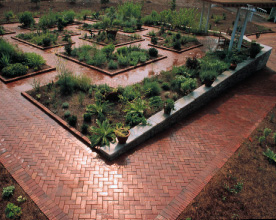
- What Are Herbs?
- Herb Culture
- Propagation
- Indoor Plantings
- Container Plantings
- Pests and Diseases
- Companion Plantings
- Harvesting and Preserving
- Special Uses of Herbs
- Using Herbs in the Landscape
- Scent and Decorative Herbs
- Herbs in Cookery
- Herb Vinegars and Oils
- Herb Teas
- Especially for Beginners
- An Herbal Glossary
- Herb Cultivation Recommendations (table)
- References
Since prehistoric times, herbs have been used for food and medicine. Today they are perhaps best known for their contributions to "good living"—to season food, to provide pleasant fragrance, or even to add interest to the garden and beautify the landscape.
Many modern medicines include plant chemicals, either natural or synthesized. There is also a growing field of research in pharmacognosy, as scientists look again at herbal folk remedies. Their historic significance prompts some growers to collect herbs and research traditional gardens. Gardeners are exploring foreign cuisines and the special tastes achieved by the addition of herbs.
Growing herbs—both annuals and perennials—is simple and rewarding. A wide variety of herbs can grow in most parts of the United States. Those featured in this publication grow well in the Deep South with its hot, humid summers and fluctuating winter temperatures.
What are herbs?
In the broadest sense, soft-stemmed green plants are termed herbs. Herbs are non-tropical plants of which leaves or stems are used primarily as flavoring, medicine or fragrance. They are distinguished from spices, which are usually the products of roots, seeds, bark, or fruits of tropical plants. Yet a number of commonly-grown herbs also yield seeds or roots that are harvested. Some herbs develop woody stems, such as lemon verbena, and are grown primarily today as landscaping plants—salvia and artemisia, for example. Potherbs are familiar greens, such as mustard and chicory; and some plants, such as garlic and hot peppers, are vegetables commonly grown in herb gardens.
There are many different reasons for the various pronunciations of the word herb. The oldest form of the word is erb. The spelling was altered to herb in the late 15th century. Britain and several Commonwealth nations pronounce the "h," with the exception of those speaking the London Cockney dialect, who tend to drop the initial "h" in many words. In the United States, except in New England, the word is also pronounced erb, likely imitating French pronunciation. Actually, either pronunciation is correct.
Herbal texts
Among the earliest compendia of herbal information are the Chinese pharmacopoeia of Emperor Shen Nung (2700 B.C.), the clay tablets of the Sumerians (2500 B.C.), and the Ebers Papyrus of the Egyptians (2000 B.C.). The Greek philosophers Hippocrates and Theophrastus, as well as Dioscorides, a Greek physician serving in the Roman army, influenced the use of herbs from the first century, A.D., through the Middle Ages in Europe, where monks became the custodians of herbal knowledge.
Borrowing also from Arabian medicinals and from herbal lore, such as that in the Anglo-Saxon Leech Book of Bald, John Gerard's Herball (1597) was an encyclopedia of herbs that grouped plants according to their use. In 1652, Nicholas Culpeper wrote The English Physician, a volume that went through several printings and was used by North American settlers. There are numerous books on herbs now available.
Herb culture
Herbs do well in average soil. Like many garden plants, herbs prefer well-drained, loamy to sandy soil in good tilth. A soil pH range of about 6 to 7.5 is appropriate for most herbs, though some such as rosemary and lavender, actually prefer slightly more alkaline soil (7.5). Southern soils may require the addition of dolomitic lime (10-20 lb per 100 sq ft) for herbs to grow well. Herbs require only moderate fertilizing; a soil test will give recommended amounts of lime and fertilizer. Herbs such as basil, chives, and parsley require more fertilization because they are heavily harvested. Because many herbs are perennials, prepare the soil well before initial planting by tilling in well-rotted manure and/or compost. Before planting the herb bed, work the soil to a depth of 1 ft or more, breaking up clods and adding organic matter if the soil is heavy clay or sandy. Like most vegetables, herbs generally require at least 6 hr of sunlight. (Some herbs grow under other conditions—see "Special Conditions.")
Herb gardeners generally agree that raised beds help herbs to flourish. They provide good drainage and warmer soil temperatures, as well as workable options for the gardener with poor soil or difficult landscaping problems. Raised beds can be contained in rock walls, landscape timbers, railroad ties or other borders.
Mulching is a must in the Deep South. Consider a mulch of shredded bark, wood chips, or pinestraw to discourage weeds and retain an even supply of moisture in the soil.
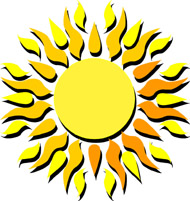
Special conditions
While the following herbs tolerate these conditions, they will generally not tolerate extremes.
Semi-Shade
bay, comfrey, costmary, lemon balm, mints, parsley, sweet woodruff
Moist Soil
monarda, comfrey, mints, parsley
Dry Soil
artemisia, borage, fennel, scented geraniums, germander, sage, santolina, winter savory, soapwort, thyme, yarrow
Propagation
Herbs are propagated from seed, stem cuttings, division and layering. They are available from nurseries, garden centers, specialty shops, as well as in the traditional manner from friends and fellow gardeners who are thinning their herb gardens.
Seeding
A number of herbs, particularly annuals, can be grown from seed in much the same way as vegetables and flowers.
Direct seeding in the spring can be successful, but seeding is more successful if begun indoors in late winter. Use clean flats which are deep enough to give the root area a proper amount of space for growth.
Fill the container with moistened mix and firm the surface. Make shallow indentations, and sow the seed evenly at the same depth given on the package; most seeds are planted at a depth approximately twice their diameter. Very small seeds should be simply pressed gently into the surface of the soil and barely covered. Lightly water the surface, and place the container in a warm, well-lighted area or under fluorescent lights, not in direct sunlight. The container can be covered with plastic wrap or placed in a plastic bag, but remove the bag as soon as germination occurs. When the seedlings have two or three leaves, they may be transplanted into small pots or, if the frost-free date has passed, into the garden. "Harden-off" transplants by putting them in their pots outside in light shade for a few days before planting them in the garden. Water the transplants well initially and for the first week after planting.
Cuttings
Many herbs such as lavender, rosemary, scented geraniums, and lemon balm can be propagated through cuttings. Some, such as French tarragon, cannot be propagated any other way. In spring or summer, cut about 3 to 5 in. of new growth containing two or more nodes. Make the cut just below a node where a leaf joins a stem, remove the lower leaves, and dip the cut end in rooting compound. The cuttings should be inserted past the first leaf node into the potting medium. The medium should be kept slightly warm and moist until cuttings have rooted, usually about three to six weeks. Root cuttings are done similarly, except the cutting is made from the budded root of the established plant and buried in the medium.
Plant Divisions/Plant Layering
Herbs that form clumps with many fibrous roots can be divided. Slice through a section of the mass with a shovel or dig up the entire plant, split the mass, and replant the divisions. Water the division well after transplanting to promote root-soil contact for quick re-establishment. Herbs propagated by division generally benefit from being dug up and divided every few years.
Another method of propagation is layering, bending a portion of a stem to contact the soil, pinning it in place until rooted, then removing and planting the rooted portion. Layering can be done in the spring or summer. If done in late summer, the plant can be left over the winter and transplanted the following spring.
Annuals and perennials: Most common methods of propagation
Annuals (seed) - basil, borage, caraway, chervil, cilantro/coriander, dill, parsley (biennial)
Perennials (seed) - hyssop, lovage, marjoram, summer savory, thyme, fennel
Perennials (cuttings) - artemisia, bay, scented geraniums, germander, lavender, lemon verbena, rosemary, rue, sage, santolina, French tarragon, winter savory
Perennials (divisions) - chives, lemon balm, mints, monarda, sorrel, tansy
Indoor plantings
Herbs can be grown indoors if the right amounts of sun and moisture are provided. Herbs need to receive at least 4 to 6 hr of sunlight each day. Do not assume that herbs near windows automatically receive enough light for growth. An average south-facing window should provide adequate light. Herbs will grow tall and spindly in inadequate light. Rotate the plants periodically so that all sides receive enough light and pinch them back to promote bushiness. Plants grown indoors will generally not grow as fast as those grown outdoors and there will not be as many leaves to harvest.
Herbs such as scented geraniums, patchouli, and bay are sensitive to cold temperatures; if they are planted in containers, they can be easily moved indoors during cooler weather.
Water herbs only when they are dry. If the soil feels at all moist 1 in. below the surface, do not water the plant. Overwatering increases the chance of disease and may eventually block necessary oxygen to the roots.
Container plantings
Herbs grow well in urns, hanging baskets, strawberry pots, and other containers as long as the light, moisture, and fertility requirements are met. Use a good lightweight, well-drained artificial soil mix, not garden soil, for container-grown herbs. Container-grown herbs do not have access to surrounding soils, are more likely to dry out quickly, and must be watered regularly, even daily. Containers should have drainage holes so excess water can escape. Regularly empty any water in the saucers under containers to prevent roots from deteriorating. Uniform monthly fertilizing keeps herbs lush, but be careful to avoid fertilizer salts build-up. Water containers sufficiently so the water runs through the holes in the bottom of the container.
Note: Some herbs—French tarragon, chervil, cilantro, cumin, and chamomile—are particularly susceptible to humid southern springs and summers and may grow best in containers under more carefully controlled conditions.
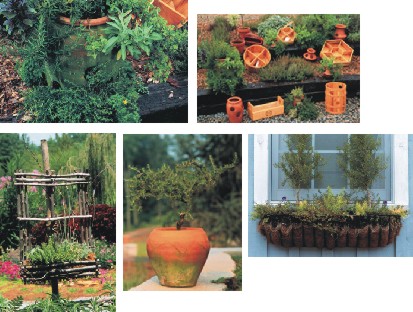
Pests and diseases
Herbs are generally resistant to garden pests and diseases. As with growing any plant, thorough soil preparation, good cultivation practices, adequate watering, and good drainage will keep most herbs growing well and trouble free.
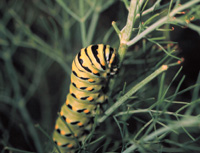
Because the leaves of herbs are used throughout the season, chemical sprays and dusts generally should not be used. Organic materials, such as Bt (Bacillus thuringiensis), insecticidal soaps, herb/spice decoctions, and soapy water may also be used, but a simple spray of water is enough to wash away many pests. A few herbs do succumb more than others to garden problems.
Caterpillars — Identify caterpillars as harmful before trying to eradicate them. Black Swallowtail caterpillars are found on dill, fennel, parsley and related plants. In many gardens dill and parsley are planted especially to attract this butterfly.
Leaf Hoppers — Because they "hop" to various parts of the plant or to other plants, leaf hoppers can spread plant diseases as well as inflict damage from their own sucking feeding habits. They may infest almost any plant but often can be controlled by water sprays.
Leaf Miners — These burrowing insects that leave white "trails" all over the leaves of parsley and lovage can be persistent. While commercial growers use floating row covers to prevent this pest, the herb gardener will more likely clip back or replant when miners attack established plants.
Aphids; whiteflies — Good air circulation helps prevent these insects on more susceptible plants, such as germander and monarda; once discovered, they can usually be washed away with a spray of water.
Rust — A fungal disease found on mint, lemon balm, and similar plants, rust is usually not destructive of the entire plant. Because mints are so persistent and propagate through underground runners (stolons), rust-infected plants can be cut back to the ground and allowed to resprout.
Mildew — Lemon balm, monarda, and yarrow may show signs of powdery mildew. Thinning, clipping off the infected parts, and clipping adjacent plants back to increase air circulation are usually effective.
Companion plantings
Further research is needed to verify claims of the effects of companion plantings. Plants said to repel pests or otherwise appear beneficial to other plants include chives, nasturtiums, mints, pennyroyal, garlic, tansy and French marigolds. Other herbs may affect some plantings negatively.
Harvesting and preserving
Herbs grown for foliage may be harvested at any time, though the essential oils are most concentrated just prior to blooming. The seedheads of herbs grown for their seeds, such as fennel and dill, may be collected soon after seeds have reached maturity. Herbs are best collected in the late morning, rinsed quickly, and air dried. Drying or freezing will preserve them.
Drying
The ideal conditions for drying herbs is a warm, dry, dark, well-ventilated place. An attic or similar room with good air circulation meets all these conditions. The simplest method is to tie herb stems together in small bunches and hang the bunches upside down from a rod or rafter. The bunches should not touch so that air can freely circulate around them. Herbs to be dried for seed collection can be enclosed in large paper bags with holes cut into the sides for air circulation.
It is difficult to recognize dried herb leaves, so label the bunches.
Herbs may be dried in a gas oven at very low temperature, about 100 °F (electric ovens cannot usually be set at this temperature). Strip the leaves from the stems and place them in a single layer on a wide, flat sheet or pan. With the door of the oven ajar, the herbs should dry sufficiently in about 3 to 5 hr. Stir herbs gently every 30 min during the drying period.
Herbs can be dried in a microwave oven. The preferred method is to put the herb leaves in between paper towels. Microwave about one minute on low. If herbs are not dry, microwave several more seconds. Herbs will burn quickly in a microwave and volatile oils may spark. Sparking, like browning of the leaves, indicates overprocessing. Herbs dried in the microwave should retain a green color.
Store herbs away from heat out of direct light. If moisture forms on the inside of the storage container, redry the herbs.
Freezing
Herbs are prepared for freezing by a quick rinsing, then by shaking off the excess moisture and patting the leaves dry. Remove the leaves from the stems, put in labeled freezer bags, and store in the freezer. An alternate method is to drop the leaves into ice trays, fill with water, and freeze. The quality of frozen herbs will usually begin to deteriorate after about 3 to 6 months. Strong-flavored herbs, such as chives and rosemary, may affect other foods in the freezer and should be stored in freezer jars.
Special Uses of Herbs
Herbs have been grown for centuries for artistic, culinary, and medicinal uses. There is a great resurgence of interest in herbal treatments for human illness. Many traditional uses have not been sufficiently documented, however, and scientists have not identified nearly all of the compounds present in various parts of herb plants. They do not know for certain the effect on the individual of medicinal herbs, either in single use or use in combination. It is important to know the margins of safety in using herbs. Use caution with unfamiliar herbs.
A growing body of literature exists about herbs and herb uses. Explore herbal medication and cosmetic use carefully through reputable sources. There is a growing body of literature on herbs and herb uses, including cosmetic and medicinal.
Herbs can be enjoyed many ways; dried in bundles, used in flower arrangements, or made into potpourris, they add to interior decor and scent the air. Herbs are also incorporated with other garden materials into wreaths, "tussie-mussies," bath accouterments, herbal pillows and hot pads, as well as cosmetic products.
Potpourris
While a successful moist potpourri is somewhat difficult to concoct, a dry potpourri can be made from almost any combination of herbs, dried flowers and spices as long as some basic rules are observed. The plant parts must be thoroughly dry and a fixative should be used for longevity. The mixture should be made, stored, and used in a non-metallic container; it should season for six to eight weeks.
Fixatives absorb and release the essential oils in herbs that otherwise would evaporate and be lost. The most common fixatives are orris root (or calamus), gum benzoin, and vetiver. Add prepared essential oils to the fixative and then combine into the mixture. The oils can also be used later to restore scent to potpourris.
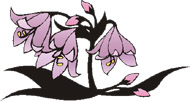
A Basic Recipe for Potpourri
1 quart dried herb leaves (e.g., lemon verbena, scented geranium)
1 quart dried flowers or flower parts (e.g., rose, marigold)
1 oz fixative
5–10 drops essential oil
Mix in a non-metallic container; cover tightly; store in a dark, cool place; allow to season about 2 months. Stir or shake the mixture periodically. Put the mixture in a decorative container that can be covered when not being used to preserve the scent.
Using herbs in the landscape
Herbs aren't just for the garden; many are attractive in perennial borders or even among foundation plantings. Pots of herbs add to the appearance of a porch or patio. They can provide traditional materials for landscaping that are both useful and ornamental.
Herbs offer bloom, color variation or texture in beds or perennial gardens. In early summer, yarrows lift dense flower heads while, in fall, pineapple sage displays showy, bright red inflorescence. Lavenders, artemisias, and lamb's ears proffer gray-green or white mounds of foliage much of the year.
Herbs, such as germander, santolina, winter savory and chives can be used effectively as edging plants; various thymes (including woolly, creeping, and lemon thyme) are both fragrant and attractive growing between stones in the patio or sidewalk, or in niches in a retaining wall.
As with other landscaping plants, select herbs according to their foliage colors, size, cultivation needs and growth habits.
Herb size
Tall/large herbs — anise, hyssop, yarrow, lemon verbena, fennel, mountain mint, bay
Medium/upright or mounding — basil, sage, lavender, artemisia, scented geranium
Small/upright or prostrate — thyme, stachys, germander, santolina
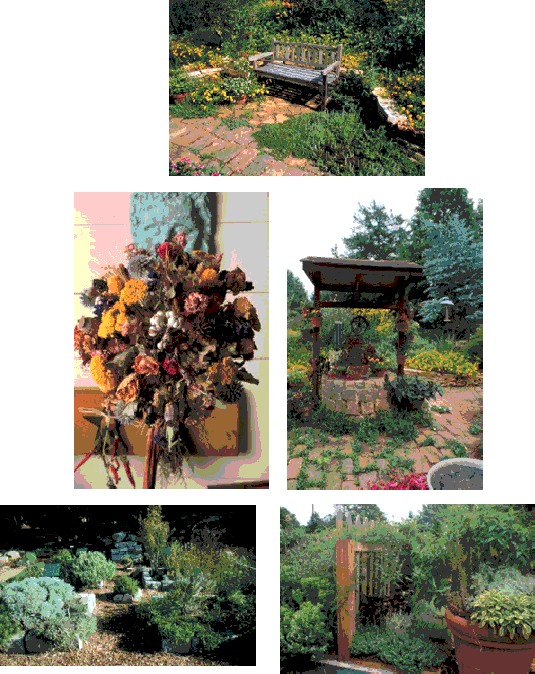
Scent and decorative herbs
Herbs that can be grown in the South provide numerous ways to decorate and scent homes, yards, and places of business. Some of the following herbs are also edible.
Anise Hyssop (Agastache foeniculum)
A tall perennial with small purple flowers, anise hyssop (neither true anise nor hyssop) blooms in the South throughout the summer. An excellent bee plant, it grows best in a sunny area and may be propagated through seed or root division.
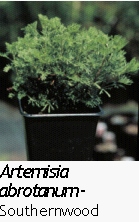
Artemisia (Artemisia abrotanum — Southernwood;
Artemisia absinthium — Wormwood)
Artemisias are noted for their grey-green or silver foliage, either ferny or slightly cut leaves. Of the numerous species, southernwood and wormwood are most popularly grown in the Southern herb garden. Artemisias favor full sun, tolerate light shade and soil with some clay. As perennials, artemisias grow woody and leggy. They should be trimmed back in spring and divided every two to three years. Strong-scented artemisias are said to be useful for repelling moths and fleas. They are particularly decorative in the garden as a contrast plant among colors and greens of other plants.
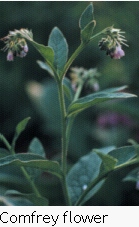
Comfrey (Symphytum officinale)
Though once used as a wound dressing, comfrey in today's herb garden or landscape is a striking, expansive plant with large leaves and pink flowers sent up on stalks in early summer. It is a perennial that reappears each spring. The plant should be watched for slug infestations. A light mulch will keep its leaves off the ground and create a less desirable habitat for pests. It is propagated primarily by division or root cuttings.
Costmary (Chrysanthemum balsamita)
A midsummer bloomer with small yellow flowers, costmary produces large, oblong, fragrant leaves which tend to look scraggly as the season progresses. It is a hardy perennial and is related to Chrysanthemum parthenium, the daisy-like feverfew. It will spread, though not invasively, through underground rhizomes and should be divided after two or three years.
Hyssop (Hyssopus officinalis)
An attractive perennial border plant with small, dark green leaves, hyssop bears pink, white, or blue flowers in the spring. Hyssop prefers a sandy soil or at least very well-drained soil and plenty of sun. It is propagated through division, cuttings, or seed. The spicy scent of both its flowers and its leaves contributes to potpourris.
Lavender (Lavandula spp.)
From the Latin lavare meaning to wash, lavender is still used today to perfume bath and cosmetic products. Grown from seed (slow to germinate) or cuttings, lavender is one of the most popular plants for the herb garden. The tallest species and probably the best known English lavender (L. angustifolia) is only one of many species including Spanish lavender (L. stoechas) and French lavender (L. dentata). Lavenders require full sun and very well-drained soil. Some herb growers recommend growing lavenders on mounds to ensure drainage. Winter hardy in milder climates, lavender produces white or pale purple to blue-purple flowers and strongly scented needle-like, grey-green leaves. Even the woody stems are fragrant.
Lemon Verbena (Aloysia triphylla)
As it is perhaps the strongest of the lemon-scented herbs, merely brushing by lemon verbena will release a delightful scent. All parts of the plant are scented lemon. Hardy in milder winters, lemon verbena is one of the last of the perennial herbs to leaf out in spring. It grows with abandon, up to 5 ft, and benefits from light pruning. Edible as well as decorative, lemon verbena is also an ideal potpourri plant. It is propagated through cuttings and prefers full sun.
Monarda (Monarda didyma)
Native to America, this tall-growing member of the mint family goes by many names including bergamot, Oswego tea, and bee balm, because it attracts bees. 'Cambridge Scarlet' is a cultivar offering bright red flowers in early summer that attract hummingbirds. Monarda leaves have an indefinable, almost lemon scent. Like other members of the mint family, it is a perennial that should be divided about every three years. It may be trimmed back to improve its appearance in late summer.

Mountain Mint (Pycnanthemum pilosum)
A perennial found in abundance in the Appalachian area, mountain mint is a fragrant plant that tolerates shade. About 2 to 3 ft tall, mountain mint develops grey-green leaves at the end of its branches with tiny greenish flowers at the very tip. The plant appears from a distance to have branches ending in white blooms. A popular bee plant, mountain mint needs pruning at least once per summer to control its tendency to grow leggy. Also, mountain mint attracts and provides food for beneficial wasps.
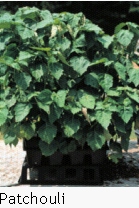
Patchouli (Pogostemon patchouli)
A tropical perennial, patchouli with its exotic Far Eastern fragrance is now available at nursery centers. Patchouli may be grown successfully outdoors in full sun, adequately watered, in fertile soil. When temperatures begin to drop regularly below 65 °F, it must be brought indoors. An excellent fragrance plant, it may be propagated by seeds, though cuttings are generally used.
Perilla (Perilla frutescens)
This Asian herb, also known as Shisho, is a highly decorative annual garden plant. Direct seeded or transplanted, perilla adapts to full sun or partial shade. The green-leaved variety is a salad herb, but the tall, purple-leaved variety is a striking landscape plant as well. This herb tends to spread from dropped seeds.
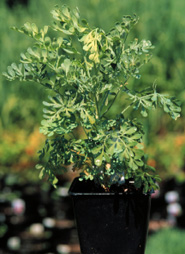
Rue (Ruta graveolens)
Grown by seeding, cuttings, or division, rue has a rich historical tradition. Also known as "Herb of Grace" because it symbolized repentance, rue is today a beautiful ornamental addition to the herb garden. However, its blue-green leaves and yellow flowers in late summer may cause dermatitis in some people. The plant will grow woody with lanky stems if not pruned at least once per summer.
Santolina (Santolina chamaecyparissus)
Santolina is an excellent perennial border plant as it grows between 1 and 2 ft high and is often used in knot gardens. Both gray and green cultivars exist. Santolina produces a strong, perhaps spicy scent when its hard, narrow leaves are crushed. The herb will succumb to heat and overwatering and should be planted in very well drained soil. It is also known as "lavender cotton" and may be used in dried arrangements and in wreathmaking.
Scented Geranium (Pelargonium spp.)
Numerous cultivars are found within this genus, commonly named by their scents—coconut, rose, peppermint, nutmeg, apple, cinnamon, and combinations such as lemon-rose, and others. Most varieties produce small, attractive flowers and leaves that are fragrant when touched. While most are compact, some can grow 2 ft around. They are excellent container plants, and since they are not cold hardy, plants in containers can be moved easily indoors. They will grow in sun or partial shade and prefer sandy soil and minimal watering. Pinched to discourage legginess, they are generally propagated through cuttings.
Soapwort (Saponaria officinalis)
Soapwort, or "bouncing Bet," is an easy perennial to grow and, unlike most herbs, tolerates moist or dry, poor soil and some shade. It produces white blooms in the summer. Its name comes from the use of its leaves as a mild, sudsing soap-like solution used even in these times for cleaning fine tapestries and other old fabrics (the term "wort" is from the Old English wyrt, meaning root, plant, or herb). It can be propagated from either divisions or seed, and will self-sow.
Stachys (Stachys byzantina)
Perennial stachys, commonly known as "lamb's ears" for its large, velvety, silvery green leaves, is a beautiful low-growing garden plant producing purple flowers in the early summer. In the same genus as betony, stachys requires minimum water once established; overwatering will cause the plant to "melt" out with deterioration of the leaves, as will shading by other plants. The thick growth also encourages insects on the underside of the leaves. Stachys spreads, though not invasively.
Sweet Woodruff (Galium odoratum)
Sweet woodruff is a favorite herb for shade and makes an attractive ground cover. It may be readily recognized by its narrow, bright-green leaves growing in successive, star-like whorls. The plant is a perennial herb about 6 to 8 in. tall.

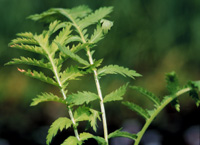
Tansy (Tanacetum vulgare)
A tall perennial with fern-like foliage, tansy produces yellow button flowers in summer. It grows in full sun and will spread by means of underground rhizomes. Because of its pungent scent, it is sometimes used as an insect repellent. Both leaves and flowers are useful in either fresh or dry arrangements. Formerly used medicinally, tansy is now known to be toxic if ingested.
Yarrow (Achillea millefolium)
Each of the several varieties of yarrow has special characteristics in the landscape, from the fern-like leaves and tall habit of A. filipendulina to A. argentea, a smaller, silver-leaved variety. Yarrows are hardy in almost any growing condition, but do best in full sun. They can be propagated by seeding or root division. Yarrows may need to be divided periodically. Remove flowerheads to promote reblooming. The flowers, which include reds, pinks, yellows, and whites, can be cut for their long stalks and dried in bundles for winter arrangements.
Literary Herbs
Poets have used plants to express their thoughts for centuries. Shakespeare wrote of rosemary for remembrance in Hamlet, and about rue, herb of grace, in The Winter's Tale.
Milton spoke of "sweetest fennel" in Paradise Lost.
The Bible refers to cleansing with hyssop, words bitter as wormwood (artemisia), and fragrance of balm.
Costmary, while not a Biblical herb, was used as a marker in Bibles and as a fragrant herb in churches in colonial time; hence, its name, "Bible Leaf."
Herbs in cookery
Herbs add gusto to foods and beverages, as well as special garnishes. Herbs also work well as substitutes for part or all of the salt normally added to foods. Dried herbs are generally stronger, though less zesty, than fresh herbs.
The herbs listed below are not only among the most popular, but they are also easy to grow in the South.

Herbs in the American colonies
Some historical uses of herbs in the American colonial home may seem rather peculiar today. Some kitchen "receits" suggest cooking fresh fish with mace, "time," and "margerum" or reclaiming spoiled venison by soaking it in salt and hot water, then cooking it with strong herbs and plentiful salt and pepper.
Medicinal teas, no longer considered safe, were made from coltsfoot, juniper, and pennyroyal. Plants such as lavender and thyme were used as "strewing herbs," placed among the rushes on floors to improve air indoors.
Basil (Ocimum basilicum)
A truly international herb, basil is used in Japan, southern Europe, Africa, and its native India. Used widely in Italian cooking, basil is an annual that may be planted in the garden at the same time as tomatoes. More than 25 kinds of basil are available commercially, among them wide leaf sweet basil (the most common), lemon basil (with a small narrow, light green leaf), and purple opal basil with leaves of a dark maroon-purple (though plants often revert to purple and green mottled leaves). Basil is easily direct-seeded or transplanted. It should be grown in full sun and well-drained soil. Basil should be pinched back, removing the flower heads, to prevent the plants from going to seed.
Bay (Laurus nobilis)
Sweet bay, an evergreen, will survive mild winters (Hardiness Zone 7b), but many Southern gardeners grow bay in containers so that the plant can be moved indoors at the approach of winter. It is slow-growing, but in its native Mediterranean climate will grow up to 50 ft. It should be grown in partial shade and requires little care beyond regular watering. Bay leaves are pungent and are best used in slow-cooked dishes, such as stews, gumbos, and sauces, usually one leaf per pot. Remove bay leaves before serving.
Borage (Borago officinalis)
Borage, an annual, grows well in drier soils. This unusual herb, grown primarily for its flowers rather than its leaves, produces bright blue star-shaped blossoms in the summer. Like Mediterranean plants such as rosemary, borage does best in a somewhat alkaline soil in full sun or light shade. It is propagated through seeds sown in the spring or through root cuttings.

Cayenne Pepper (Capsicum annuum, C. frutescens [Tabasco])
Not strictly an herb, but often grown as a spice plant, peppers are an increasingly popular culinary plant for cooks/gardeners who want to prepare Cajun, African, Mexican, or Asian dishes. Grown as an annual, it is easy to propagate from seed, planted after all danger of frost is past; it requires full sun, average soil. The colorful red peppers also make the plant a handsome addition to the landscape.
Chives (Allium schoenoprasum)
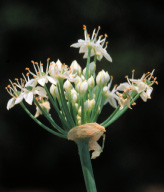
A member of the onion family, chives is a perennial that bears lovely mauve, edible flowers in late spring. Garlic chives (A. tuberosum) has white flowers in late summer. Chives are easily propagated by division, each containing 10 or so little bulbs. Chives require regular fertilizing with a balanced fertilizer. Their mild onion flavor is excellent in egg, cheese, meat, and vegetable dishes as well atop the sour cream on the standard baked potato. Shallots, also in the onion or allium family, may be grown as herbs, though they are usually considered a vegetable. The term scallion may refer to shallots or other types of onion but is correctly applied to bunching onion varieties or seedlings of any onion variety.
Cilantro/Coriander (Coriandrum sativum)
The term cilantro refers to the leaves of this plant, also known as Chinese parsley, while coriander refers to the seeds. The mature leaves are feathery, and the young leaves dentate. The young leaves are used for cooking. Cilantro, a hardy annual, does not transplant well and should be direct seeded in fertile soil at intervals for continuous harvest. Cilantro will tolerate either full sun or partial shade, though Southern heat and humidity make it somewhat difficult to grow through the summer.
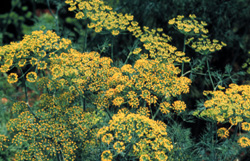
Dill (Anethum graveolens)
Often used in German cooking, salads, spreads and relishes, dill has a striking appearance with its umbel-shaped inflorescence, which produces the dill seed. Both the leaves and the seeds are especially tasty not only in pickles but also in breads and as a seasoning for fish. An annual, dill should be seeded every month or so through the summer to ensure a steady supply. Dill requires full sun, but tolerates drier soils.
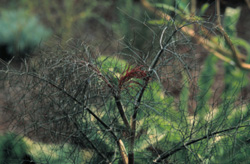
Fennel (Foeniculum vulgare)
Similar in appearance and use to dill, licorice-flavored fennel is a biennial herb (though occasionally it resprouts after setting seed) with both culinary and landscaping uses. There are several types of fennel—the familiar green, feathery sweet fennel, bronze fennel with maroon leaves, particularly the new growth, and Florence fennel or finocchio with an enlarged stalk base. Florence fennel is used raw in salads or is found in Italian dishes as a vegetable perhaps prepared with mozzarella, olive oil, and tomato. However, Florence fennel may be difficult to grow in parts of the South. Fennel self-seeds freely and grows in full sun and soil with minimal moisture.
Garlic (Allium sativum)
Perhaps the best known seasoning besides salt and pepper, garlic is an essential ingredient in foods from meats to breads. A member of the onion family, garlic is grown from the cloves, which form the bulb, planted in later summer. Harvested bulbs are dried in the shade with the tops removed.
Lovage (Levisticum officinale)
With leaf flavor similar to celery, lovage is a good substitute for celery, which is hard to grow except as a winter crop in the Deep South. It is an ideal addition to soups and salads. Though a perennial, lovage may fail in the heat and humidity of Southern summers and is best re-seeded every fall. It grows in either full sun or partial shade and requires rich, moist soil.
Lemon Balm (Melissa officinalis)
One of several herbs with lemon scent and flavor, lemon balm is popular for tea and for sauces as well as for seasoning dishes. Lemon balm is a perennial and can spread up to 3 ft, crowding out other herbs. Once large, however, it may succumb to dieback. It is easily propagated by division and will grow in partial shade.
Lemon Grass (Cymbopogon citratus)
One of the most important flavorings in Thai cooking, this herb has long, thin, gray-green leaves and a scallion-like base. Citral, an essential oil also found in lemon peel, gives lemon grass its sour-lemon flavor and fragrance. Lemon grass is available fresh or dried in Asian markets. It is used to make tea and to flavor soups and other dishes.
Marjoram (Origanum majorana)
Sweet marjoram, considered by many botanists to be in the same genus as oregano, is an all-purpose herb used extensively for meats and vegetables. A tender perennial, it can be propagated from seeds or by division. Its stems grow woody with age; the leaves should be stripped from the stems before using in cooking.
Mint (Mentha spp.)
Mint encompasses more than 35 commercially available species, the most common of which are spearmint and peppermint. Mints are distinguished by their square stems. Peppermint usually has a black stem. Other mints include orange, apple, lemon, even "chocolate," so named by virtue of leaf fragrance. Mint doesn't come true from seed and is grown from cuttings or root divisions. It requires regular moisture and will grow in partial shade. Mint is the most invasive of the herbs and must be checked both in the garden and in mixed container plantings. The barrier around a mint must extend 10 to 12 in. into the soil to contain the roots. Mint may also grow over the rim of the container to root in outlying soil.

Oregano (Origanum vulgare)
Oregano can be invasive, spreading by means of underground rhizomes. There are several kinds of oregano, including Greek oregano, Italian oregano, and golden oregano. Cuban oregano (Plectranthus amboinicus) and Mexican oregano (Lippia graveolens) belong to different genera but have similar flavors. Oregano is used in Mexican, Italian, and Greek cuisine, imparting a complex flavor. The leaves of culinary oregano are slightly fuzzy; the small flowers are pink or white. (The lavender-flowered ornamental oregano has little flavor.)
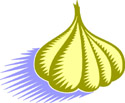 |
| Pesto |
| The essence of summer anytime, pesto is a quintessential Italian sauce.
½ cup olive oil Process quickly together in a food processor all ingredients except oil. Add oil to the mixture in a slow stream with machine on. Serve immediately over pasta or store sauce in refrigerator or freezer. |
Parsley (Petroselinum crispum)
There are two basic kinds of parsley—curled and flat-leaved (Italian) parsley. Most gourmets claim the flat has a stronger taste. Parsley is usually direct-seeded, though germination typically takes 2 to 3 weeks. Parsley requires unfailing moisture for continuous growth. It is prone to leaf miners, which may be controlled to a degree by cutting off and destroying infected leaves and stimulating new growth. Freshly chopped parsley is essential to French and Cajun cookery, and to other salads, soups, meats, and vegetable dishes.
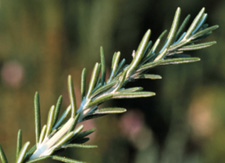
Rosemary (Rosmarinus officinalis)
Like lovage and bay, rosemary is native to the Mediterranean area and likes sunny growing conditions that mimic that climate. Drought resistant after established, it should be planted in soil with good drainage. Rosemary is an attractive, shrubby perennial that can reach 3 to 5 ft. There are numerous kinds, including a prostrate variety (R. prostratus) useful in the landscape. Rosemary is a strong-tasting herb and should be used with discretion. As the leaves are dense, many people prefer rosemary chopped finely before it is added to a dish. It is particularly delicious in meat dishes and in breads such as Italian foccaccio.
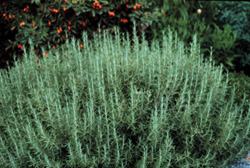
Sage (Salvia officinalis)
This perennial is delicious with pork and other meat dishes; sage is also used to flavor cheeses and to make a soothing tea. Its attractive grey-green, wrinkled leaves and lavender flowers also make it a good plant for the landscape. With age, sage grows woody stems, becoming bush-like. There are numerous sages including golden sage and tri-color sage, all interchangeable in cooking. Once sage is established, it usually does well on rainfall alone and demands well-drained soil. Some growers even suggest planting sage on a small mound. Sage is susceptible to nematodes and root rot.
Pineapple Sage (Salvia rutilans)
Pineapple sage is a large sage variety with a fabulous pineapple scent. It is used for flavoring drinks, chicken dishes, cheeses, and jams and jellies. In addition, pineapple sage is used in the landscape to attract butterflies and hummingbirds. It blooms in mid- to late-summer just in time for the hummingbird hatchlings. Pinch pineapple sage back, so it will grow bushy. It is propagated by cuttings and prefers full sun for best growth.

Savory (Satureja hortensis — summer savory; Satureja montana — winter savory)
While used alike in bean dishes and in soups and stews, a primary difference in winter and summer savory is that winter savory with its smaller, darker green leaves is a perennial with a stronger flavor. Annual summer savory grows more easily from seed, while winter savory is best grown from cuttings or divisions. Both require full sun. Summer savory needs somewhat higher soil fertility than winter savory.
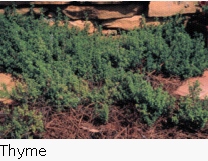
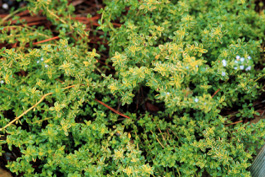
Thyme (Thymus vulgaris)
English thyme, the most common variety, has fine leaves and slightly woody stems. There are, however, nearly 400 varieties of thyme; among the most popular varieties grown in the South are lemon thyme, caraway thyme, and mother-of-thyme. Creeping thyme makes an excellent ground cover alone or between stepping stones or as a spreading plant for the garden wall. It may be propagated most successfully by root division, layering, or cuttings. True English thyme is vegetatively propagated. Older thyme plants will develop a woody center and should be cut back. Thyme is excellent in both meat and vegetable dishes. An essential oil component, thymol, is used in some commercial antiseptics.
Herb vinegars and oils
Make herb vinegars by adding 1 part washed leaves, blossoms, or whole stems of one or more edible herbs to 4 parts vinegar, usually white vinegar; for example, "pink" vinegar can be made by adding purple basil to white vinegar. Stronger flavored vinegars, such as cider or balsamic, may mask more delicate herb flavors. Steep herbs in the vinegar for 3 to 6 weeks. After the flavor has reached the desired strength, strain the vinegar and put in a decorative bottle; add a few sprigs of fresh herbs to the bottle for decoration. Make herb oils in the same way; the oil should be warmed before adding it to the herbs. However, there is potential for botulism toxicity in unprocessed herbal oils, especially those made with garlic. Soak the garlic in vinegar for 24 hr before adding it to the oil. Refrigerate the mixture in a sterile container and use promptly.
Herbs may also be mixed with butter or margarine and used in cooking or as a spread.
Herb teas
The fresh or dried leaves of edible herbs may be used as tea in the same way as the more familiar black oriental teas, though herbal teas tend to be milder in flavor. Among the more popular are lemon balm, peppermint, chamomile, rosemary, and catnip. Tisanes are herb "teas," made by steeping herb leaves in hot water. Decoctions are usually made by boiling the leaves in water for several minutes. Both drinks may be flavored with honey. Herbal teas are also made from combinations of herbs or herbs, fruit, and/or nuts or their extracts.
Flavors for Special Cuisines
Many good cooks are discovering new uses for familiar herbs and the tastes of lesser-known herbs, perhaps through other cuisines. Thai and Mexican cookery, for example, share the use of hot peppers, cilantro (coriander), and garlic. Yet Thai cookery also makes use of special herbs and herbal mixtures, such as lemon grass and sesame oil, while Mexican cookery uses oregano and cumin. As they were once in the center of the spice trade, Asian, African, and Middle Eastern cooks use more spices than herbs. Some herbs are particularly associated with certain cuisines.
French: chervil, thyme, parsley, marjoram, bay, chives, rosemary
Italian: oregano, parsley, garlic, basil, fennel
South African: cumin, coriander, fennel, scallions
Spanish: basil, parsley, garlic, rosemary
Bulgarian: dill, thyme, mint, fennel
Caribbean: marjoram, bay, thyme, parsley, garlic, coriander
Mexican: oregano, cilantro, peppers, sage, cumin
Greek: rosemary, garlic, mint, parsley, oregano
German: dill, fennel, caraway
Chinese: cilantro, chives/scallions, peppers
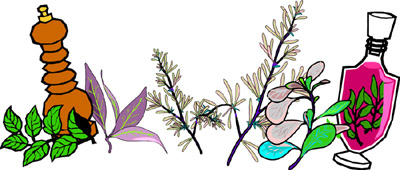
Especially for beginners
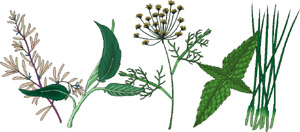
The following are seven well-known annual (a) or perennial (p) herbs, readily available in the South as various cultivars, that will give the beginning gardener experience with easy-to-grow culinary, decorative, and fragrance herbs:
| Herb | Cultivation | Use |
|---|---|---|
| Basil (a) | sun, moderate moisture, clip flowers to encourage bushiness and prolong life of plant | tomato sauce, pesto |
| Mint (p) | sun or partial shade, semi-moist soil, plant in container to hold in check | desserts, tea, garnish |
| Yarrow (p)* | sun, moderate moisture, may need staking | fresh and dried arrangements |
| Scented geranium (p)* | sun or partial shade, moderate moisture, move indoors for winter | potpourri |
| Oregano (p) | sun, moderate moisture | meats, vegetables |
| Sage (p) | sun, moderate moisture, trim to promote bushiness | meat, cheese, potpourri |
| Chives (p) | sun or partial shade, moderate moisture | eggs, meats, vegetables |
| * Non-culinary | ||
An Herbal Glossary
Absorption: A method of extracting plant oil by laying herbs on tallow or lard, as in the making of pomade.
Annual: Plant that completes its life cycle in one growing season.
Biennial: Plant that requires 18 to 24 months to complete its life cycle.
Blanch: To process quickly in boiling water to help prevent deterioration.
Bouquet garni: A bundle of herbs tied with string and added to soups and stews and other dishes; the classical bouquet garni consists of two stalks each parsley and thyme, one sprig of marjoram or chervil, and one-half bay leaf.
Composite: A flower head made up of smaller complete flowers.
Cultivar: A cultivated variety of a plant.
Decoction: A method of extracting juice and oil from roots, bark, or seeds by soaking the plant material in water that is slowly heated to boiling and left to cool before use.
Dentate: Toothed or jagged, as a leaf edge.
Distillation: A purification process through which liquid is vaporized, condensed, and collected.
Essential Oils: Concentrated plant extracts responsible for flavor and fragrance, often derived through distillation.
Fixative: A material, such as gum benzoin or orris root, that preserves the scent of potpourri by absorbing the plant oils and slowly releasing them.
Fines herbes: A mix of several herbs used to flavor food during cooking; herbs traditionally used include parsley, chervil, tarragon, chives.
Floret: The smaller flower that in combination makes up the larger flower head.
Herb: From the Latin herba; usually, though not always, a green, succulent, temperate-zoned plant; generally used today to indicate a plant with culinary, fragrance, cosmetic, or medicinal use.
Herbaceous: Non-woody, generally dying back to the ground each winter.
Herbal: A book describing the appearance and use of plants.
Hybrid: Plant produced by a cross between two cultivars, usually within the same species.
Inflorescence: The characteristic arrangement of flowers on a stalk or in a cluster.
Infusion: An herbal liquid made by steeping leaves and stems in boiling hot water, covering for several minutes, then straining.
Knot garden: A garden design involving plantings in intricate, interwoven geometric patterns.
Maceration: Extraction of plant oils by soaking herbs in water or oil.
Perennial: A plant that continues its growth cycle year after year.
Pharmacognosy: A body of information about the history and medicinal uses of herbs and plants in their natural state.
Pharmacopoeia: The reference compendium of medicine used by physicians.
Phytotherapy: The use of plants for medicine.
Potherb: A plant that furnishes edible flowers, leaves, or stems usually prepared by boiling or steaming.
Potpourri: A mixture of dried fragrant plant materials combined with a fixative.
Poultice: A moist medicinal pack made by filling a small sack of thin material with an herbal paste.
Ravigote: A sauce made of various herbs mixed with vinegar.
Remoulade: An oil or mayonnaise-based sauce with mixed spices and herbs.
Rhizome: An underground stem that produces new plants at nodes.
Sachet: A small cloth packet containing dried herbs or herb mixture and used to scent drawers and closets.
Simple: A term used in colonial America for a medicinal herb used to cure a single disease or ailment; use reflected in the word "officinalis" in the scientific name of the plant.
Spice: From the Latin species, a term usually applied to a substance made from roots, bark, seed, or fruit of a tropical plant and used for culinary, fragrance, or medicinal purposes.
Stolon: A stem growing along the surface of the ground from which new plants grow at nodes.
Umbel: A flower head in the shape of an inverted umbrella, often a cluster of smaller flowers.
Tea: An infusion made by pouring boiling water over dried herb stems or leaves.
Tilth: Soil condition indicating degree of soil particulation or friability.
Tisane: A delicately flavored herbal drink made by pouring boiling water over fresh or dried herb leaves or flowers, steeping for several minutes, and straining out the plant material.
Toilet Waters: Mixtures of herbs and/or plant oils with water or isopropyl alcohol.
Topiary: A horticultural art by which shrubby plants are clipped into shapes or vining plants are trained over a form.
Tussie-mussie: A small herbal bouquet originally carried in Medieval times to ward off odors.
References
The following are just a few of the many books available on herbs, and a number of them offer both fact and folklore. The reader should obtain professional opinion before using unfamiliar herbs for food or medicine, as some herbs historically used for human consumption are now known to be toxic.
An Atlanta herb sampler. (1985). The Herb Society of America, Chattahoochee Unit.
Bremness, L. (1998). The complete book of herbs — A Practical Guide to Growing and Using Herbs. Penguin Studio.
Bown, D. (1995). Herb Society of America encyclopedia of herbs and their uses. Dorling Kindersley.
Burnie, G., & Fenton-Smith, J. (1996). A grower's guide to herbs. Crescent Books.
The Cornell book of herbs and edible flowers. (1993). Cornell Cooperative Extension Service.
Creasy, R. (1988). Cooking from the garden. Sierra Club Books.
Culpeper, N. (1981). Complete herbal and English physician (Reproduction of the 1826 edition). Magna Books.
Duff, G. (1987). A book of herbs and spices. Salem House Publishers.
Hill, M., & Barclay, G. (1987). Southern herb growing. Shearer Publishing.
Hopkinson, P., Miske, D., Parsons, J., & Shimizu, H. (1994). Herb gardening. Pantheon Books.
Kowalchik, C., & Hylton, W. (Eds.). (1987). Rodale's illustrated encyclopedia of herbs. Rodale Press.
Lathrop, N. J. (1981). Herbs: How to select, grow and enjoy. HPBooks.
Meltzer, S. (1983). Herb gardening in Texas. Lone Star Books.
Michalak, P. (1993). Rodale's successful organic gardening herbs. Rodale Press.
Ogden, S., & Ogden, E. (1989). The cook's garden. Rodale Press.
Shaudys, P. (1986). The pleasure of herbs. Garden Way Publishing.
Stuart, M. (Ed.). (1979). The encyclopedia of herbs and herbalism. Grosset and Dunlap.
Wilson, J. (1994). Landscaping with herbs. Houghton Mifflin Company.
Zolley, E., & Mead, C. (1995). Gardening with herbs. Clarkson Potter.
Special Appreciation to James Strawser, former University of Georgia Cooperative Extension photographer, for the photographs in this publication.
Status and Revision History
Published on Apr 14, 2008
Published on Jan 24, 2011
Published with Full Review on Jun 29, 2014


























































